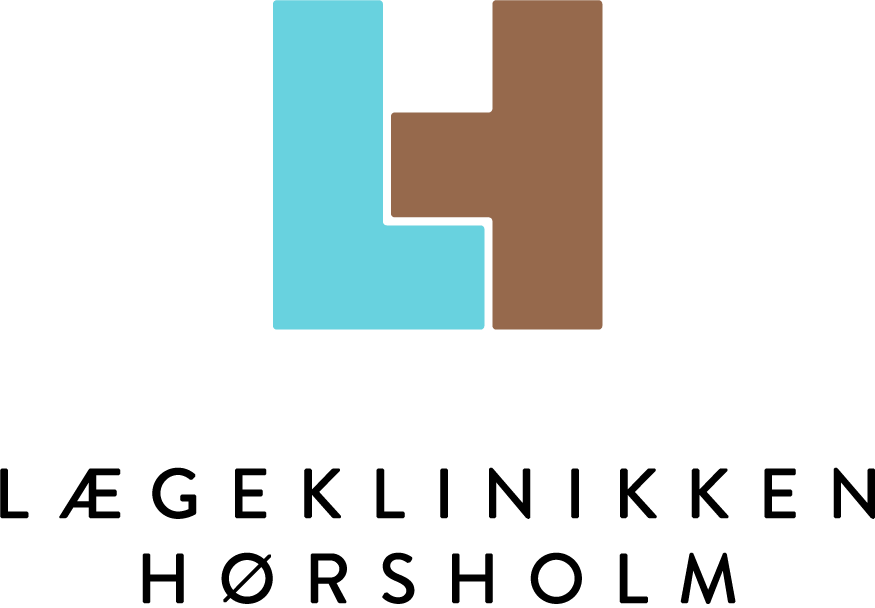The Ascorbate Effect in Infectious and Autoimmune Diseases
Robert F. Cathcart, M.D.
The vitamin C effects are all the usual effects of the usual small doses of vitamin C and also the effects of the moderate and usual high doses of the vitamin C. The ascorbate effect is where massive doses of vitamin C are used where we are mostly throwing away the vitamin C for the electrons carried. With massive amounts of ascorbate it is possible to neutralize the massive amounts of free radicals generated mostly by the damage to mitochondria of infectious diseases, allergies, and injuries. Under most conditions the electrons carried by free radical scavengers come from the metabolism of glucose in the mitochondria. The amount of electrons from this source, when the mitochondria are not damaged, are sufficient when we are well to neutralize the free radicals of living. However, when we are sick and especially where the mitochondria are damaged, the free radicals overwhelm the mitochondrial ability to make electrons available. In these cases vitamin C in massive amounts can be the source of the necessary numbers of electrons to eliminate most of the free radicals of diseases. The ordinary doses of vitamin C, vitamin E, beta carotene, etc. cannot suffice. Any inflammation is evidence that the free radicals have not been adequately eliminated.
In 1969, I discovered that the amount of ascorbic acid tolerated orally without loosening of stools (a benign diarrhea) was somewhat proportional to the free radical toxicity of the condition being treated. The sicker a person was, the more ascorbic acid they would tolerate orally without it causing diarrhea. In a person with an otherwise normal GI tract when they were well, would tolerate 5 to 15 grams of ascorbic acid orally in divided doses without diarrhea. With a mild cold 30 to 60 grams; with a bad cold, 100 grams; with a flu, 150 grams; and with mononucleosis, viral pneumonia, etc. 200 grams or more of ascorbic acid would be tolerated orally without diarrhea. The process of finding what dose will cause diarrhea and will eliminate the acute symptoms, I call titrating to bowel tolerance.
When at the peak of the cold it is possible to take 100 grams of ascorbate in divided doses in 24 hours, I call it a 100 Gram Cold.
Sodium ascorbate intravenously never causes diarrhea in any dose. The diarrhea of ascorbic acid taken orally is caused by a hypertonic situation in the rectum. Intravenous sodium ascorbate actually increases bowel tolerance to ascorbic acid orally if administered at the same time.
The ascorbate effect is a threshold effect. Symptoms are usually neutralized when a dose of about 90% or more of bowel tolerance is reached with oral ascorbic acid. Intravenous sodium ascorbate is about 2 ½ times more powerful than ascorbic acid by mouth and since for all practical purposes huge doses of sodium ascorbate are non toxic, whatever dose necessary to eliminate free radical driven symptoms should be given.
The mathematical formulas that describe redox potential involve logarithms. Logarithms go low, low, low and then rapidly go high. The ascorbate effect acts at a threshold dose as would be anticipated from the logarithms in the formula when a reducing redox potential is forced into the oxidized tissues involved in the disease.
Example or the Common Cold
Most people have had the experience of feeling that they are catching a cold one evening but then wake up the next morning all well. What has happened here is that either antibodies from a previous cold wipe out the virus, or the white cells in the nose and throat destroy the virus by phagocytosis. These white cells need a little vitamin
C to perform phagocytosis. If the virus damages enough mitochondria in the nose and throat to produce enough free radicals to destroy all the vitamin C then the white cells shut down and that is when you wake up knowing you will be sick for a week or so. A condition of acute induced scurvy exists in the nose and throat.
Small doses of vitamin C taken as a maintenance dose will prevent a certain percentage of colds because this acute induced scurvy is harder to induce.; Once the free radical cascade is induced in the nose and throat small and moderate doses of vitamin will not cure the cold. However, moderate doses will prevent the spread of the acute induced scurvy into the sinuses, ears, and bronchial tubes so complications will be prevented. It is interesting to note than moderate doses by reducing the free radicals systemically will slow down the production of new antibodies; therefore, the basic, uncomplicated mild disease, unsick condition, will last a little longer than an uncomplicated untreated cold.
However, if massive doses, (usually bowel tolerance doses of ascorbic acid will suffice, but not always, sometimes intravenous sodium ascorbate is necessary) are driven into the nose and throat sufficient to neutralize the free radicals and eliminate the acute induced scurvy in the nose and throat, the white cells come out fighting mad and destroy the virus.
Humeral Immunity Reduced by Massive Amounts of Ascorbate
Massive doses of ascorbate augment cellular immunity while reducing humeral immunity. Clinically, the affinity of antibodies for their antigen is augmented by free radicals or an oxidative redox potential. I hypothesize that the single disulfide bond that holds the light chain of the antibody to the heavy chain is strengthened in an oxidative redox potential. Single disulfide bonds similarly hold all the other receptor sites of the immune system together.
I further hypothesize that the immune system receptor sites are under some normal stress and that under a reducing redox potential there is more of a tendency for the disulfide bond to break into two sulfhydryls which incapacitates the antigen bonding site. This would be a simple, neat mechanism whereby the humeral immune system would be turned off when there was no injury to the body. Any injury to cells would damage mitochondria, produce free radicals, induce an oxidative redox potential and turn on the immune system. While it appears from all the scientific work done on the immune system, its turn on is more complicated than this hypothesis, this hypothesis would explain many of the clinical effects of massive doses of ascorbate.
This hypothesis would explain why symptoms of hay fever, asthma and anaphylaxis are blocked or ameliorated by massive doses of ascorbate. It is pointed out that when a person is given penicillin or other antibiotics, they are sick and have oxidative redox potential in various parts of the body. This oxidative redox potential turns on the antibodies and the penicillin, or etc., can be recognized as a foreign body. In my experience, massive doses of ascorbate given along with penicillin prevent the anaphylactic and other allergic reactions to penicillin.
Ascorbate Treatment of Viral Hepatitis
In my experience acute viral hepatitis, A, B, C, non AB, etc., are all cured by massive amounts of ascorbate given over a few days intravenously. Chronic viral hepatitis is a different story. It is such a different story that something other that just a continuing viral infection must be going on. I think it is possible that chronic liver damage releases chemicals from the interior of the liver cells that cause an autoimmune like situation to be turned on. Chronic hepatitis, like that diagnosed as chronic hepatitis C, can be vastly ameliorated by continuing high doses of ascorbic acid by mouth, alpha lipoic acid (thank you Bert Berkson), selenium, vitamin E, silymarin, and strict restriction of sugar.
Chronic Fatigue Syndrome
I practiced medicine in Incline Village, Nevada between 1970 and 1980. There I saw many mononucleosis and bad flu cases. All responded to massive doses of ascorbate. I never saw an acute viral disease develop into chronic fatigue. Shortly after I left Incline, the chronic fatigue syndrome was identified by Dr Paul Cheney in 1983. A friend, the dentist in Incline, told me that none of my old massive vitamin C takers got chronic fatigue syndrome. I admit that this observation is not hard science but it is interesting.
Chronic fatigue syndrome is ameliorated by continuing bowel tolerance doses of ascorbic acid but these patients must be worked up for candida, parasites, food and chemical sensitivities, hypothyroidism, T4 resistence, etc., and treated appropriately. The nutritional program should include no sugar, low carbohydrates, elimination of all foods they are allergic to, chemicals, zinc, manganese, chromium, selenium, cod liver oil, vitamin E, multiple Bs, sometimes IM B12, folic acid and multiple Bs, along with the massive doses of C.
Ebola and Other Hemorrhagic Fevers, Nipah Virus and Etc.
All of these diseases produce massive amounts of free radicals. These hemorrhagic fevers are examples of probably 500 gram diseases. These diseases are so toxic, produce so many free radicals, that they rapidly produce not only a localized acute induced scurvy but a systemic induced scurvy. Shortly. collagen fibers begin to break down and bleeding is induced throughout the body. These cases must be treated with massive amount of sodium ascorbate intravenously immediately at the beginning of the disease. The rate of administration should be rapidly increased until the fever and other acute symptoms are diminished. My guess at a starting dose would be at a rate of at least 240 grams of sodium ascorbate per 24 hours. Do not be cheap. Give them vitamin E, B vitamins, zinc, manganese, chromium, selenium, EPA, DHA, etc. I have never treated a hemorrhagic fever case.
SARS is just another flu virus, possibly more toxic than most flues so give them intravenous sodium ascorbate. Probably 120 grams of sodium ascorbate intravenously per 24 hours would do it but give more according to the symptoms. I have treated at lease a thousand cases of flu and never so much as hospitalize one case.
Distemper and Kennel Fever
Although dogs are ascorbate producing animals, it is possible that a very toxic disease will overcome their ability to produce ascorbate. Wendell Belfield, DVM, of San Jose, CA has been curing dogs of distemper and kennel fever for 20 years with massive doses of sodium ascorbate intravenously. The dog just needs to be helped out for a few days with the intravenous and then he takes over himself.
Poliomyelitis
The first physician who used massive amounts of sodium ascorbate intravenously on serious viral diseases was Fred Klenner, M.D. of Reidsville, North Carolina. He published curing 60 cases of polio out of 60 cases with intravenous C. See Southern Medicine and Surgery, July 1949, p. 209. The whole article is on my website http://www.orthomed.com/polio.htm
Bacterial Infections
Bacterial infections cause symptoms, suppress the immune system, and cause allergic reactions to antibiotics by way of free radicals. While these diseases should be treated with the appropriate antibiotics, they should also be treated with massive doses of ascorbate. Massive doses of ascorbate clinically seem to broaden the spectrum of activity of antibiotics against resistant bacteria.
Autoimmune Diseases
My experience with some autoimmune diseases, particularly lupus, is that ascorbate in massive doses is very helpful. The following is my theory as to why. This theory involves many simplifications and probably some ideas that turn out inaccurate but are a way of thinking about the problem of autoimmune diseases that explain the role of massive doses of ascorbate. It also gives the patient a theory with which to listen to their body to figure out their biochemical individuality as related to a treatment of their disease.
Any disease that has symptoms of inflammation, which are mediated by free radicals, cannot help but be benefited by eliminating those free radicals as much as possible with massive doses of ascorbate. When you use enough ascorbate, throwing away the vitamin C for the electrons carried, it is a matter of chemistry, not necessarily medicine, that the free radicals will be neutralized.
The immune system is very complex but to use the example of antibody exclusion, antibodies are made by B cells in utero and after. When a new B cell develops it takes on a random combination that determines the shape of the receptor site of the antibody it makes. These B cells try to match chemicals on the surface of cells. When an immature B cell matches something it dies. When a mature B cell matches something, it multiplies and produces antibodies of that shape. This is called antibody exclusion and is one of the reasons why antibodies do not ordinarily attack a person’s own cells. When the person is 100% well, their antibodies will not attack the person’s own cells. However, when a person is sick, making many free radicals, these free radicals increase the affinity of the antibodies for their antigen and may cause the antibodies to fit some shape which is not a perfect fit but a close fit.
One of the purposes of antibodies is to mop up dead or diseased cells. Remember that the antibodies and the B cells making them are extracellular and only have tried to fit shapes on the surfaces of cells. Antibodies could fit some of the chemicals in the interior of cells. Therefore, when a cell leaks, for whatever reason, certain chemicals from the interior of cells, certain antibodies may attack that cell.
The other thing is that certain injuries like from chemicals, etc., may alter the shape of chemicals on the surfaces of cells. This, especially in the oxidative redox potential of the injured area, may cause the cross reaction of antibodies on these changed cells.
So, now an infection, allergy, injury, chemical reaction, etc.;, may cause damage to cells and cause antibodies to attack. For example, suppose the person has a condition, like candida, EBV, HHV6, and various other stresses, that results in the release of lots of free radicals, These free radical up regulate the immune system. It is obvious that massive doses of ascorbate at this point may down regulate the immune system by eliminating free radicals in such a way as that the following may be prevented.
First step
The person may have a hidden or not so hidden allergy to something like milk. The immune system may then produce antibodies to milk that are similar in shape to the chemicals on the surfaces of the synovial lining of joints. The shape would not be exact because antibody exclusion would have prevented the formation of B cells making that shaped antibody. However, if the shape is close enough, with the increased affinity of antibodies in this oxidative redox potential situation, the antibodies will attack the synovial lining of the joints. Maybe some previous injury to the joint or some stress increases the oxidative redox potential in a particular joint and that joint becomes inflamed first.
At this early point, in this example, an absolutely milk free diet may stop all this. Massive doses of ascorbate would obviously help by reducing the oxidative redox potential. I saw a patient 3 months ago who had a diagnosis of rheumatoid arthritis by a local immunologist 10 years ago. She, on her own, discovered when she ate no red meat or milk products that the arthritis went away. She has been in total remission for 10 years. The immunologists I know were not interested in discussing the case.
Second step
With this injury to the synovial cells, they start leaking chemicals from their interior to the outside where antibodies can match them. In the possible case being discussed, the autoimmune reaction may take on a life of its own and perpetuate itself even though the person stops any milk. Antibodies build up in numbers and their affinity increases because of the increasing oxidative redox potential. Then, if other joints have not been involved before, they may become involved now because maybe some of the chemicals from the interior of the cells are on the surface in minute amounts but never before enough to cause a noticeable reaction. Now with the increasing numbers of antibodies and the increased oxidative redox potential, more joints become involved.
At this point, the case is not so easy to put into remission but it may be that massive doses of ascorbate, maybe even intravenously, plus eliminating the original problem (in this case milk) may throw the person into remission.
Other Problems
I find that most of the time other problems such as candida, and other food and chemical sensitivities, and leaky gut frequently get involved. All of these have to be treated. Antiyeast programs, no sugar, low carbohydrate diet, elimination of all things the patient is sensitive to, support with large amount of vitamins, minerals, essential fats, and amino acids are necessary. With Sjögren’s syndrome use in addition primrose oil. Bio-identical hormones, especially progesterone, can be helpful in osteoporosis.
I want to make special mention of nightshades (tomatoes, potatoes, egg plant, red, green, and yellow peppers, paprika and tobacco). Nightshades should be eliminated in everyone who has osteoarthritis of the fingers but they can be involved in other arthritis also. There is a relatively common genetic weakness in the ability to digest a toxin within the nightshades especially manifesting itself as one ages. If there is a genetic tendency to get lupus or rheumatoid arthritis, these diseases can be triggered by nightshades. I have seen this several times in lupus patients. The immunologists I know are not interested in this.
If standard medical treatments are used such as prednisone, methyltrexate, etc., massive doses of ascorbate plus other nutrients may augment their effects and reduce side reactions. It never hurts with any disease to eliminate as many of the free radicals as possible and reduce the oxidative redox potential
Nightshades (Solanaceae species) are:
1. potato, the white potato
In some baby foods, potato starch or potato flour in some breads, doughnuts, biscuits, candies, cookies and
in soups. Sweet potatoes are ok. Yams are risky.
2. tomato
husk tomato, or ground cherry tomato, cherry, yellow, and plum tomatoes, European bitter sweet, tree tomato,
tomatillo, strawberry tomato.
3. green pepper
tobasco pepper, garden pepper, cayenne, cherry, red cluster, hot, bell, sweet, pimiento, Chili, long and red peppers.
(Black or condiment pepper is OK because it is not a nightshade.)
4. eggplant
5. Misc., garden huckleberry, Morelle, wonderberry and sunberry, pepino, Cape gooseberry.
6. Tobacco, belladonna, atropine and scopolamine.
Childers NF, Russo GM. The Nightshades and Health. Horticultural Publications, Sumerset Press, Somerville, N.J., 1977. I think this
book is out of print but you might find it on an old book search site on the internet..
MEDICAL PAPERS PUBLISHED RELATED TO VITAMIN C
1. Cathcart RF. Clinical trial of vitamin C. Letter to the Editor, Medical Tribune, June 25, 1975.
2. Cathcart RF. The method of determining proper doses of vitamin C for the treatment of diseases by titrating to bowel tolerance. The Australian Nurses Journal 9(4):9‑13, Mar 1980.
3. Cathcart RF. The method of determining proper doses of vitamin C for the treatment of disease by titrating to bowel tolerance. J Orthomolecular Psychiatry 10:125‑132, 1981.
4. Cathcart RF. Vitamin C: titrating to bowel tolerance, an ascorbemia, and acute induced scurvy. Medical Hypotheses 7:1359‑1376, 1981.
5. Cathcart RF. C‑vitaminbehandling till tarmintolerans vid infektioner och allergi. Biologisk Medicin 3:6‑8, 1983.
6. Cathcart RF. Vitamin C: titrating to bowel tolerance, anascorbemia, and acute induced scurvy. Let’s Live (Japan) 16:9, Nov 1983.
7. Cathcart, R.F. Vitamin C: the nontoxic, nonrate-limited, antioxidant free radical scavenger. Medical Hypotheses, 18:61-77, 1985.
8. Cathcart, R.F. Vitamin C in the treatment of acquired immune deficiency syndrome (AIDS). Medical Hypotheses, 14(4):423-433, Aug 1984.
9. Cathcart, R.F. The vitamin C treatment of allergy and the normally unprimed state of antibodies. Medical Hypotheses, 21(3):307-321, Nov 1986.
10. Cathcart, R.F. The Three Faces of Vitamin C. J. Orthomolecular Med. 7:4;197-200, 1993.




